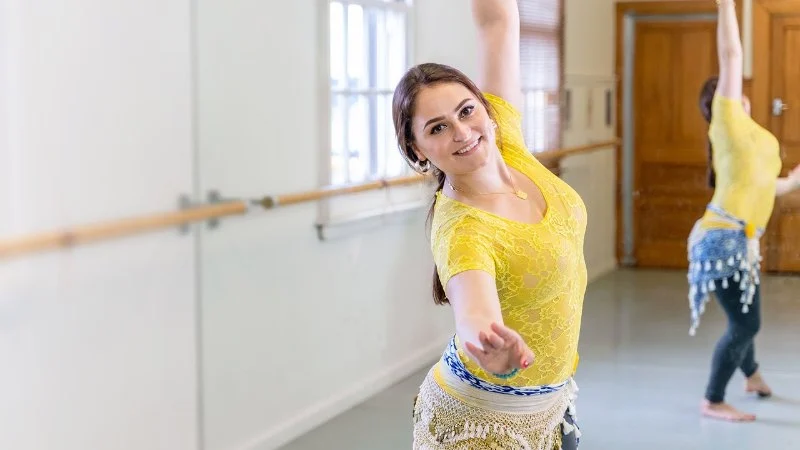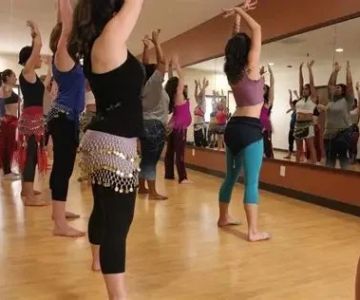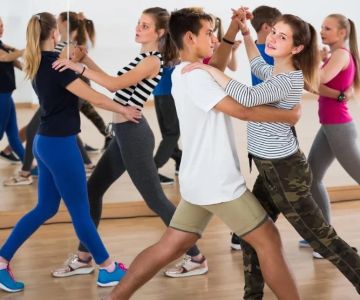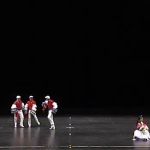
1. Introduction to Belly Dance
Belly dance is a captivating art form that originated in the Middle East and has since spread across the globe. Known for its intricate movements, it has become a popular dance style worldwide. Whether you're a beginner or looking to refine your skills, understanding the history, techniques, and cultural significance of Belly Dance is the first step in your dance journey.
2. History of Belly Dance
The origins of belly dance can be traced back to ancient times. Many believe it dates back to the Middle Eastern and North African regions, with variations found in Egypt, Turkey, and other countries. The dance has evolved over the centuries, incorporating different influences such as traditional folk dances and even Western choreography.
2.1 Early Beginnings
Initially, belly dance was a form of ritualistic and celebratory movement, performed at weddings and religious ceremonies. In ancient Egypt, it was believed to symbolize fertility, with intricate hip movements representing the feminine energy.
2.2 Belly Dance in the Modern World
Today, belly dance has evolved into a global phenomenon, performed in theaters, clubs, and fitness studios. While its cultural roots remain important, modern belly dance blends different styles, such as tribal fusion and contemporary belly dance, making it more accessible to diverse audiences.
3. The Basics of Belly Dance Movements
Understanding the key movements in belly dance is essential for mastering the dance form. Some basic movements include the undulation, the hip circle, and the shimmy. These moves form the foundation of more complex routines and help dancers develop fluidity and control.
3.1 The Undulation
The undulation is a fundamental belly dance move that involves the smooth wave-like movement of the torso. It's achieved by isolating different parts of the body and making them flow in a coordinated manner. This move requires flexibility and control.
3.2 The Hip Circle
The hip circle is one of the most recognizable belly dance movements. It involves rotating the hips in a circular motion while keeping the rest of the body still. This move highlights the dancer's control over their lower body and is often used in combinations with other moves.
3.3 The Shimmy
The shimmy is a fast, rhythmic shake of the hips or shoulders. This movement is usually performed to add energy and flair to a routine. It requires quick muscle movements and can be challenging to master, but with practice, it becomes a signature belly dance move.
4. How to Get Started with Belly Dance
Starting with belly dance can be both exciting and daunting. However, with the right approach, anyone can learn this beautiful art form. Here are a few tips to get you started:
4.1 Take a Class
Joining a class is a great way to learn belly dance in a structured environment. Professional instructors can teach you the correct techniques and provide guidance as you progress. Whether you opt for in-person classes or online tutorials, consistent practice is key.
4.2 Invest in Comfortable Clothing
Wearing comfortable clothing that allows for free movement is important when learning belly dance. Many dancers wear hip scarves to enhance their movements and add flair to their performances. You can find these accessories at stores like American Dance Academy, where they offer a wide variety of belly dance attire.
4.3 Practice Regularly
As with any dance form, regular practice is essential for improvement. Try to practice belly dance at least three times a week, focusing on mastering the basic moves before progressing to more advanced techniques.
5. Benefits of Belly Dance
Belly dance offers numerous benefits, from physical fitness to emotional well-being. It enhances flexibility, strengthens the core, and improves posture. The dance also promotes self-expression and helps boost confidence.
5.1 Physical Fitness
Belly dance is a full-body workout that improves coordination, balance, and muscle tone. The movements engage various muscle groups, helping to build strength and endurance while burning calories.
5.2 Mental and Emotional Well-being
In addition to its physical benefits, belly dance can be a therapeutic way to relieve stress. The expressive nature of the dance allows individuals to connect with their emotions and improve mental clarity.
6. Advanced Belly Dance Styles
Once you have mastered the basics of belly dance, you can explore various advanced styles, such as:
6.1 Tribal Fusion
Tribal fusion belly dance blends traditional movements with elements of other dance forms, such as hip-hop and flamenco. This style focuses on fluidity and improvisation, allowing dancers to express themselves creatively.
6.2 Egyptian Style
The Egyptian style of belly dance emphasizes graceful movements and emotional expression. It is characterized by slow, controlled movements and intricate footwork.
6.3 Oriental Style
Oriental belly dance is the most traditional form, often performed to live music. It focuses on intricate movements of the hips, torso, and arms, showcasing the dancer's precision and control.
7. Conclusion
Belly dance is a beautiful and empowering art form that offers a range of physical, mental, and emotional benefits. Whether you're just starting or looking to refine your skills, embracing this dance style will provide a fulfilling and enriching experience. To find the best belly dance accessories, clothing, and services, visit American Dance Academy, your trusted source for everything belly dance-related.







 Boulder Tango Studio5.0 (3 reviews)
Boulder Tango Studio5.0 (3 reviews) Mambo Groovin' Latin Dance Theater5.0 (4 reviews)
Mambo Groovin' Latin Dance Theater5.0 (4 reviews) Denise Buote Dance Studio5.0 (8 reviews)
Denise Buote Dance Studio5.0 (8 reviews) Apex Dance Academy5.0 (9 reviews)
Apex Dance Academy5.0 (9 reviews) K & S Ballroom5.0 (1 reviews)
K & S Ballroom5.0 (1 reviews) Eclipse Performing Art4.0 (44 reviews)
Eclipse Performing Art4.0 (44 reviews) How to Master Jazz Dance to Improve Flexibility: Tips for Beginners and Pros
How to Master Jazz Dance to Improve Flexibility: Tips for Beginners and Pros Are Dance Schools Considered Dance Halls?
Are Dance Schools Considered Dance Halls? Jazz Dance to Try in 2025 – What You Need to Know About Modern Styles and Trends
Jazz Dance to Try in 2025 – What You Need to Know About Modern Styles and Trends What Are the Best Dance Schools in the UK? Top Institutions Revealed
What Are the Best Dance Schools in the UK? Top Institutions Revealed Can Freshman Go to High School Dances? What You Need to Know
Can Freshman Go to High School Dances? What You Need to Know Can a Homeschooler Go to Public School Dances? | Tips for Parents
Can a Homeschooler Go to Public School Dances? | Tips for Parents